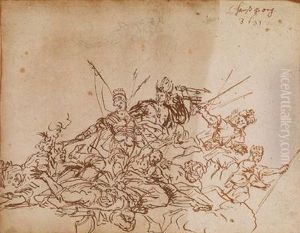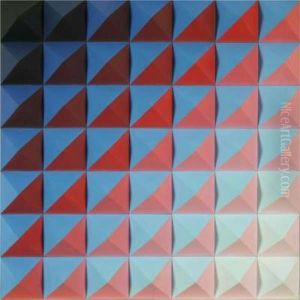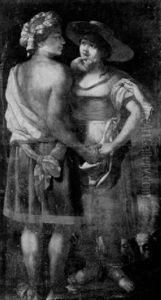Hans Georg Asam Paintings
Hans Georg Asam, also known as Johann Georg Asam, was a German painter active during the Baroque period. Born in 1649 in Munich, he was part of the notable Asam family, which included significant figures in the world of Baroque art and architecture. His younger brother, Egid Quirin Asam, was a famous sculptor and architect, and together they formed a prominent artistic partnership known for their work in southern Germany.
Hans Georg Asam initially received his artistic training from his father, Hans Asam, who was also a painter. His early works were influenced by the prevailing Baroque style, characterized by dramatic expression, rich colors, and a dynamic sense of movement and emotion. Asam developed a reputation for his religious paintings, frescoes, and altarpieces, which were often commissioned for churches and abbeys.
Throughout his career, Asam worked in various cities, including Munich and Freising, where he contributed to the decoration of numerous ecclesiastical buildings. His work is noted for its intricate detail and the fusion of architecture and painting, a common trait of the Baroque era. He often collaborated with his brother, and their joint projects are considered some of the finest examples of southern German Baroque art.
Unfortunately, Hans Georg Asam did not achieve the same level of fame as his brother Egid Quirin Asam, and information about his personal life and career is relatively sparse. It is known that he never married and had no children. His death occurred in 1711, after which his brother continued their legacy, completing some of the projects they had started together.
Asam's contributions to the Baroque style have been acknowledged by art historians, though his individual works are less documented compared to those of his brother. Nevertheless, his paintings and collaborative efforts remain an important part of the artistic heritage of the Baroque period in Bavaria.


